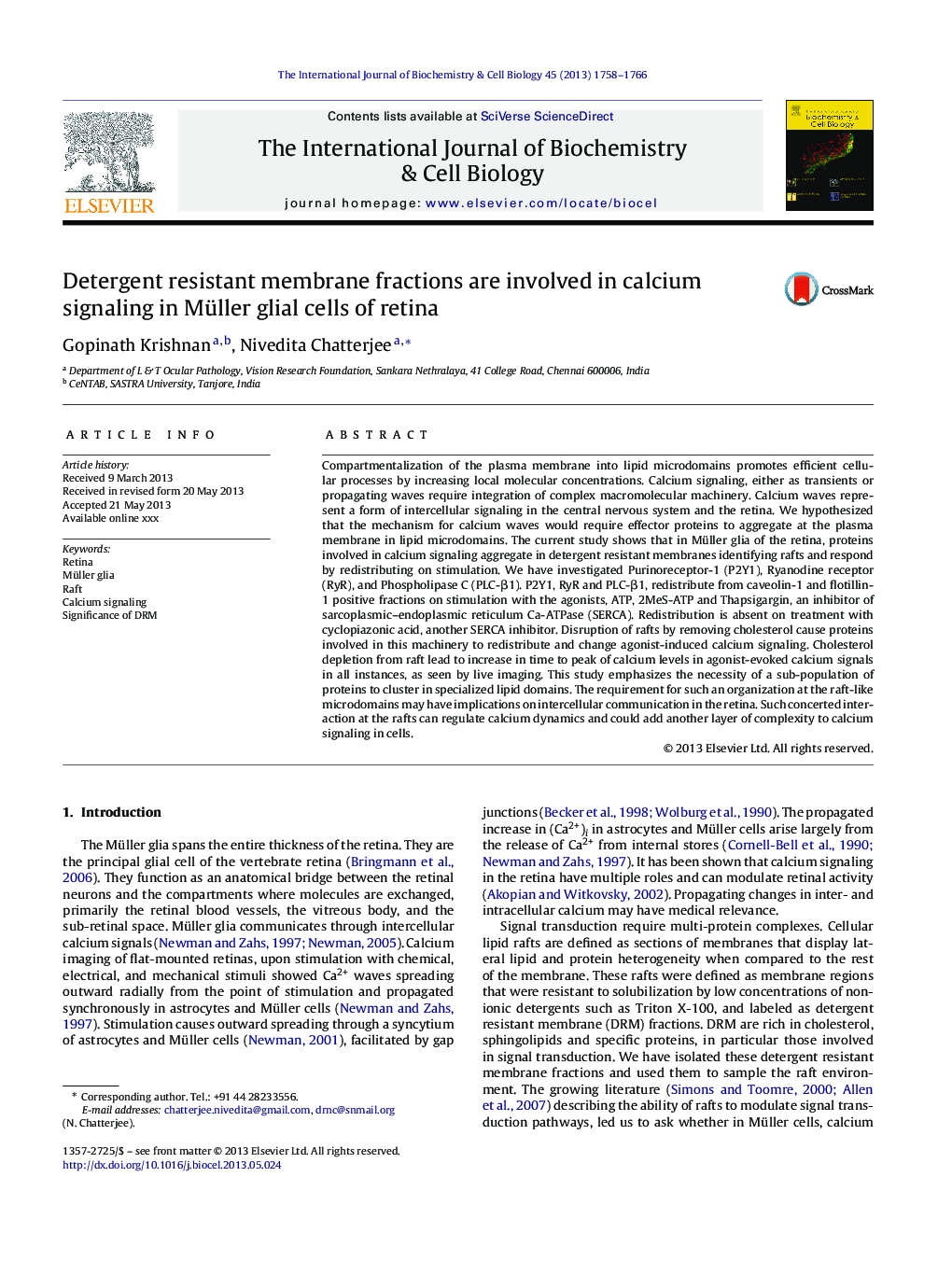| Article ID | Journal | Published Year | Pages | File Type |
|---|---|---|---|---|
| 8324075 | The International Journal of Biochemistry & Cell Biology | 2013 | 9 Pages |
Abstract
Compartmentalization of the plasma membrane into lipid microdomains promotes efficient cellular processes by increasing local molecular concentrations. Calcium signaling, either as transients or propagating waves require integration of complex macromolecular machinery. Calcium waves represent a form of intercellular signaling in the central nervous system and the retina. We hypothesized that the mechanism for calcium waves would require effector proteins to aggregate at the plasma membrane in lipid microdomains. The current study shows that in Müller glia of the retina, proteins involved in calcium signaling aggregate in detergent resistant membranes identifying rafts and respond by redistributing on stimulation. We have investigated Purinoreceptor-1 (P2Y1), Ryanodine receptor (RyR), and Phospholipase C (PLC-β1). P2Y1, RyR and PLC-β1, redistribute from caveolin-1 and flotillin-1 positive fractions on stimulation with the agonists, ATP, 2MeS-ATP and Thapsigargin, an inhibitor of sarcoplasmic-endoplasmic reticulum Ca-ATPase (SERCA). Redistribution is absent on treatment with cyclopiazonic acid, another SERCA inhibitor. Disruption of rafts by removing cholesterol cause proteins involved in this machinery to redistribute and change agonist-induced calcium signaling. Cholesterol depletion from raft lead to increase in time to peak of calcium levels in agonist-evoked calcium signals in all instances, as seen by live imaging. This study emphasizes the necessity of a sub-population of proteins to cluster in specialized lipid domains. The requirement for such an organization at the raft-like microdomains may have implications on intercellular communication in the retina. Such concerted interaction at the rafts can regulate calcium dynamics and could add another layer of complexity to calcium signaling in cells.
Related Topics
Life Sciences
Biochemistry, Genetics and Molecular Biology
Biochemistry
Authors
Gopinath Krishnan, Nivedita Chatterjee,
